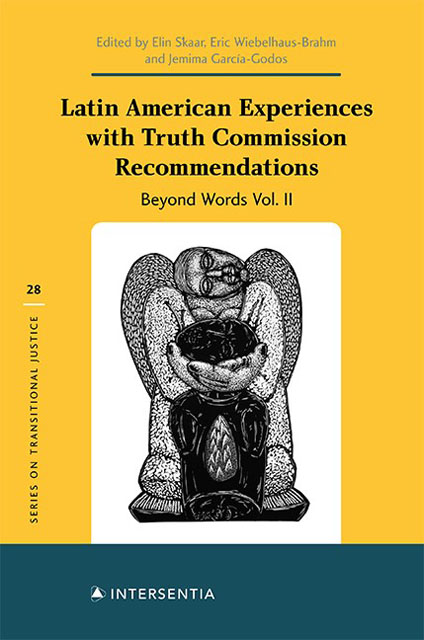Chile’s Rettig and Valech Commissions: Truth and Reparation under the Sign of Reconciliation
Published online by Cambridge University Press: 19 November 2022
Summary
INTRODUCTION
Two separate truth commissions were created in Chile within diff erent contexts for the purpose of establishing the State's responsibility for gross human rights violations committed during the civil-military dictatorship headed by Augusto Pinochet Ugarte (1973 – 90). The National Truth and Reconciliation Commission (Comisión Nacional de Verdad y Reconciliación – CNVR), ran during 1990 – 91 in the immediate after math of the democratic transition. About a decade later, in 2003 – 2004, the National Commission on Political Imprisonment and Torture (Comisión Nacional sobre Prisión Política y Tortura – CNPPT) delved further into Chile's past.
The National Truth and Reconciliation Commission, known as the Rettig Commission after its chairperson, was one of the first measures enacted by President-Elect Patricio Aylwin Azócar in 1990 to address the dictatorship's human rights violations, shed light on the responsibility of the State and contribute to the process of “reconciliation” of the Chilean people. The Amnesty Law Decree of 1978 and the features of the so-called “Chilean Transition”, also known as the agreed transition and “política de empate” (Even Score Policy), in which the military stepped down but still held real power, constrained what form of transitional justice was possible. “The Chilean transition attempted to neutralize clashes between social and political forces connected to the traumatic past by deactivating the memory of historical violence using an initial mechanism: consensus and its reconciliation discourse” (Richard 2010: 31). In this context, public policy on the matter revolved around developing an agenda of truThand reconciliation instead of establishing criminal responsibility for crimes against humanity.
With members broadly representing the various segments of Chilean society, the Rettig Commission established the existence of 2,298 individuals who disappeared or were executed for political reasons. It further described the role of State agents in those crimes and formulated recommendations to establish symbolic and socio-economic reparations for the victims as well as modify institutions to prevent future human rights violations. Based upon the Rettig Commission's recommendation, Law 19123 established reparation measures for family members of victims “qualified” as such by the Commission. The Chilean government also created other public policies contemplating the circumstances of individuals dismissed from government or private employment or forced into exile for political reasons.
- Type
- Chapter
- Information
- Latin American Experiences with Truth Commission Recommendations: Beyond Words Vol. II , pp. 63 - 110Publisher: IntersentiaPrint publication year: 2022



